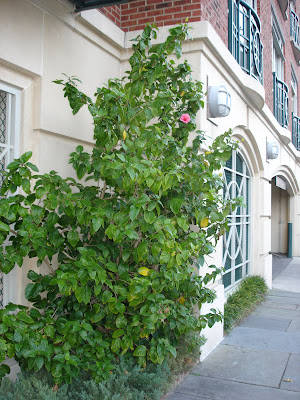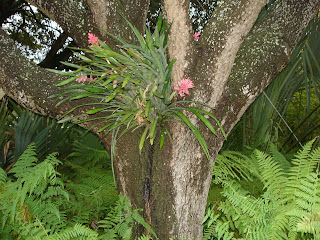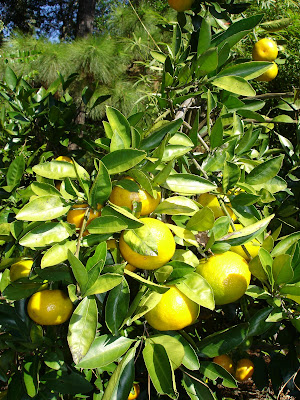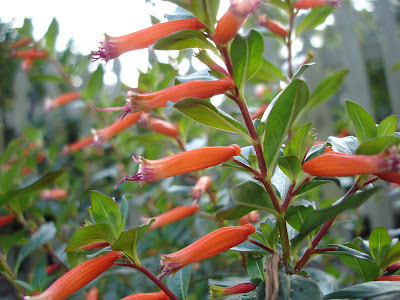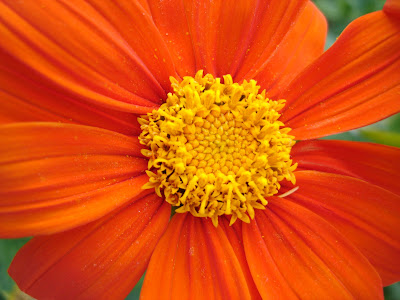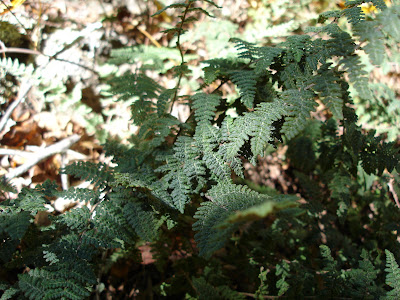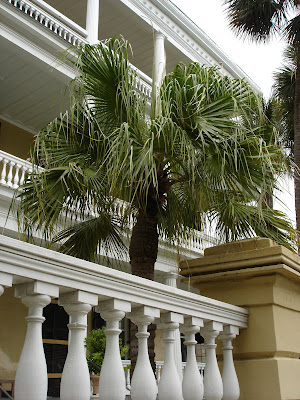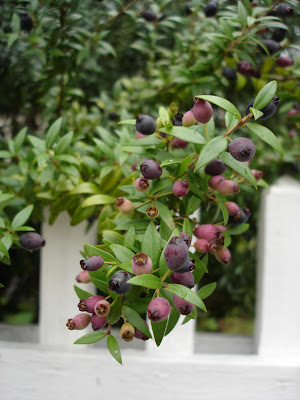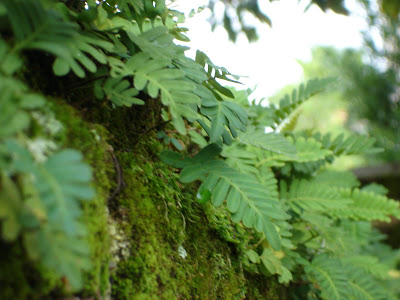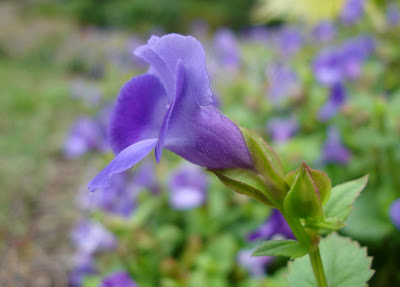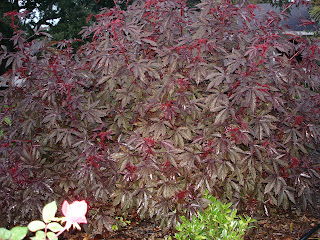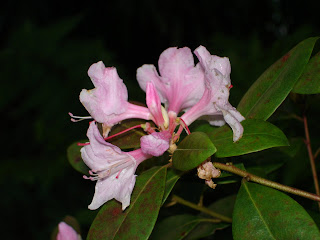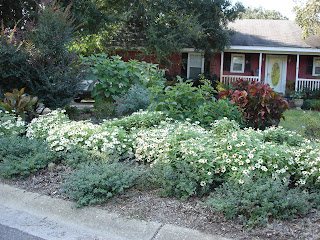The tropics are just a live oak away? Okay, maybe not. There are no coconut palm lined beaches magically appearing on the other side of my live oak tree. There is no secret door in the trunk that magically opens to a warmer, sunnier place. But.....there are tropical plants that thrive under the live oak.
Charleston straddles USDA Plant Hardiness Zone Ho-Hum (or 8b), with minimum temperatures of 15-20 degrees, and USDA Plant Hardiness Zone Ooh-La-La (or 9a), with minimum temperatures of 20-25 degrees. What grows in Zone Ooh-La-La? Think tropical hibiscus, some bromeliads, an expanded range of palms, tropical ferns. I want that! So I keep shoving more marginal plants under the protective canopy of my live oak.

The happy little collection of strobilanthes, aechmea, vriesea gigantea "Nova", and monstera in this November 30 photo was unscathed by the scattering of freezing temps that had knocked back other tender plants in exposed areas of my yard. Will they all make it through the winter? Who knows. I have serious doubt about the monstera and even the sturdier plants in that group may die if we have an exceptionally cold weather. In the meantime though, I love having that bit of color hanging on in my yard.
A live oak can help gain those few precious degrees that mean a tropical that would normally die is instead root-hardy (hopefully the case with the monstera) or that a tropical that normally would only be root-hardy is evergreen (for example, the Persian Shield). On a cold night, the closed canopy of the live oak acts like a cozy down blanket by trapping the warmer air radiated up from the ground. That same "blanket" also prevents plant cell damaging frost from settling on leaves and stems.
How much of a difference does it make? Seeing is believing. In a downtown Charleston park, this Persian Shield, lying just a few feet outside the dripline of a Live Oak, was top-killed by freezing temps a few days ago:

But just ten feet away, under the protective cover of the same Live Oak, this Persian Shield is untouched by the cold:

And because it hasn't been killed back in years, it has these great big leaves:
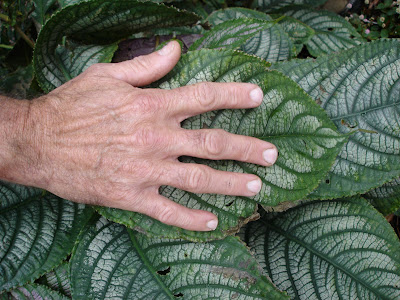
Same story with this groundcover which is also outside the dripline of the Live Oak:

And again just ten feet away, is the same plant, same day:

I have no idea what this little groundcover is. Any suggestions? I do know that under that tree it is perennial.
Of course, it isn't only live oaks that afford some freeze protection. This Blue Daze is sheltered by the lorapetalum in the background but just a few feet away ten more Blue Daze are all top-dead:

If these plants all thrive this winter, my azaleas and holly ferns had better watch out... Zone Ooh-La-La will be moving on in!
